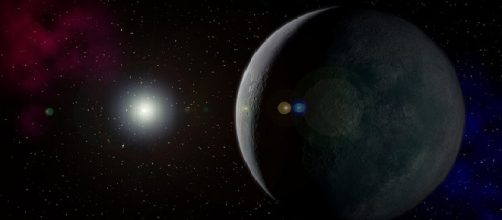Evidence of a massive planet in the solar system
Scientists discovered what seems to be a ninth planet which is ten times the mass of the earth. This new planet resides in a zone beyond Neptune known an s the Kuiper belt, which is a very cold region with lots of icy bodies. Astronomers have predicted its existence due to abnormalities seen in the orbits of a number of icy bodies.
Findings about the existence of the ninth planet
Astronomers have discovered that some icy bodies and dwarf planets residing inside the Kuiper belt tend to follow orbits that coincide together at perihelion and on the plane of their orbits.
This coincidence in orbital travel and clustering has a 0.007% of chances of being due to a random event and more likely due to a dynamic astronomical episode.
What is the Kuiper belt?
The Kuiper belt is a region that lies beyond the orbit of Neptune, at 30 AU, and extends to about 50 AU. This region is filled with small objects, like the asteroid belt; however, unlike the asteroid belt whose objects are mostly composed of rock, the ones in the Kuiper belt are icy bodies mainly composed of ammonia, methane and water.
The region of the Kuiper belt host in the present three dwarf planets; Pluto, Makemake, and Haumea. Triton and Phoebe; which are Neptune and Saturn’s´ moons thought to have originated in the Kuiper belt, but then were pulled by the giant planets.
Planet characteristics
Although, theninth planet, as it is known, has not been seen physically, it is believed that it may possess a mass of 10 times that of the earth and that it would take approximately 10-20 thousand years to complete a turn around the sun on a highly elliptical orbit. Its chemical composition is similar to the ice giants Uranus and Neptune.
It´s speculated that this planet may have been ejected to the icy region at the beginning of formation of the solar system. Scientists think that the study of distant and similar objects in the outer solar system allow to test hypothesis and deepen into understanding the orbital characteristics and real mass of the distant planet.

